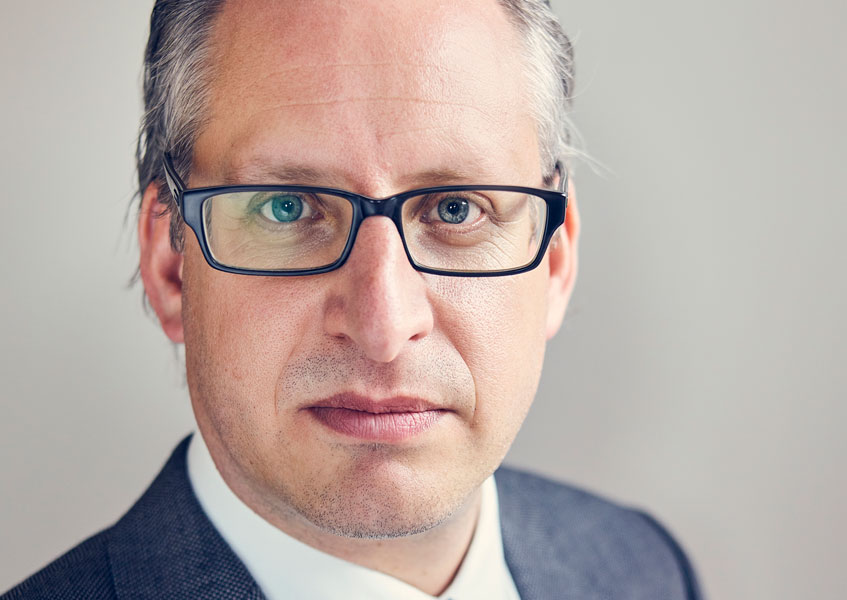On arrival at CT Group headquarters, visitors must surrender all technology before they can enter the Mayfair office, where privacy is critical.
Chief executives hand over their smartphones, computers and cameras, as they prepare to sit down with revered political lobbyist, the so-called “Wizard of Oz”, Sir Lynton Crosby.
Crosby’s firm CT Group, formerly Crosby Textor Group, has been instrumental in a number of elections and influencing public policy – for instance High Speed 2. But he tends to keep himself and his strategies out of the limelight.
CT Group’s website gives very little away. There are no clients – instead testimonial pages quote national press and unnamed chief executives from unnamed companies, applauding effective “problem solving” and “game-changing work”.
But EG was given the rare privilege of bypassing security and going behind the scenes to uncover just how Lynton Crosby and Westminster’s John Walker are applying these strategies to help real estate companies to win planning consent and develop.
The CT way
Over the last 20 years, Crosby has honed an almost formulaic methodology, using data analytics, human persuasion and relentless digital campaigning to secure a desired outcome, typically in the form of a vote.
The group has moved from advising political leadership contests to corporate intelligence, with investment, M&A, litigation, technology, and also real estate, through the subsidiary CT Local.
“In the last few years we came across the occasional issues where people wanted a development or to stop a development,” says Crosby. “We’d had some interaction in the space, but you’ve got to find the right people.” He turns, pointedly, to Walker.
After 35 years at Westminster City Council, overseeing some 12,500 planning applications, the former planning director knows the challenges for local authorities and barriers to development.
“An awful lot of development falls into a trap, where the only voice that hits the local authority is the opposition. The only thing the planning committee sees is the stack of objections letters and nothing in support. What this is about is finding out where that support is and activating that,” says Walker.
This is the CT way, says managing director and former councillor, Gavin Stollar. “It is all about giving politicians cover to make brave decisions. At the moment the vacuum is being filled by a minority of NIMBYS, and the silent majority are not finding their voice.”
“People know we need more houses. But there is a political risk for a lot of councillors in making that decision,” he says. “If you can help equip them with arguments and use your capital as a developer to make the case for regeneration, then you’re achieving your objective.”
Persuading perception
Using the right terminology – regeneration, not development, for example – is vital. Perception is key and, says CT, this can be curated with the right approach.
“The term development has become almost a dirty word. It is not something people want to see happen in their local area, because of the connotations around pressure on public services, more people coming in, overcrowding and congestion,” says Lisi Christofferson, research director at CT. But regeneration adds value, she says, it brings investment, infrastructure and social profit.
“Research is the vehicle by which we are able to elicit insights into people’s preferences, expectations, hopes and fears about the area in which they live,” she adds.
CT Local conducts opinion research, through polls and focus groups, and online data collection, taking information from social media platforms.
“You can map who these people are, how they are connected, how many there are, what their voice truly represents,” says Crosby. “It means that we can have the very best insights of what communities are thinking, what their motivations are, what they are looking for and how they will respond to proposals.”
This research can garner immediate actionable intelligence, he says. It can identify heritage assets valued by the community, the need for a doctor’s surgery, or a previous grievance at a neighbouring scheme. But, on a deeper level, it allows CT to identify that voter base within the community and their individual motivations.
“To be successful in any engagement, you have to ensure that you deliver personally relevant messages to your target audience,” adds Crosby. “That’s what all the research, data analytics, knocking on doors, engaging with local authorities and developers does. You can do it in relation to housing people, you can do it in relation to a vote.”
Portraits by Tom Campbell
Divide and conquer
“In any campaign, there are three groups to focus on,” instructs Crosby, launching into full political strategist mode. “There will be your base, the opponents, and then the swing group in the middle.”
Step one is to identify the base – those supporters that see value in development. Then, activate the base by tapping into their motivations, also revealed in the research. Next, opponents must be countered, neutralised. This should be done with logic, demonstrating that they are the small minority, debunking the myths or exposing flaws in their argument.
“Your base you motivate, your opponents you seek to neutralise and contain,” continues Crosby. “And then, in the middle, you’ve got often the biggest group, the swing group, which you need to persuade.
“The way you persuade is through emotion, not through reason. The way you motivate people to support your project is through emotion,” he says. That’s where the doctor’s surgery or a retained facade connects with an individual, inspiring them to support the scheme.
This political prowess is layered with planning understanding, a black book of contacts, and a hefty dose of digital campaigning and PR to fill the vacuum.
CT has a global team with offices in eight countries. Stollar says: “That affords us a bandwidth, which we exploit.”
Last year, a last-minute instruction gave CT just 10 days to execute a strategy and win a campaign. “We very quickly rolled into action and deployed our digital team in Australia and the UK on a 24-hour rotation.”
Stollar won’t go into the specifics of the campaign, but suffice to say, they won.
‘Execute the right outcome’
By engaging with the community, adjusting plans to meet those demands and amplifying the pros, CT provides local authorities and politicians with a case for development.
“The members need to hear that there is another side, to balance that minority of objectors out, so whenever they go to make a decision they don’t just hear a wall of noise from a very small number of people,” says Walker.
“Politicians react to their perception of perceptions. In the absence of evidence, they’ll react to their perception of perceptions,” adds Crosby. Developers and investors need to move from being insular and reactive to proactively fighting for their plans.
“Often businesses are asking local authorities to use up some of their political capital in support of the commercial capital of the business, without the business itself being prepared to commit any of its capital.”
With local authorities priming local plans, with fresh housing targets and changing infrastructure, the CT way aims to shift that responsibility, with developers empowering politicians.
“It could be a local plan, a cabinet, or convincing local authorities that they should be deploying major smart city EV infrastructure. That still ends in a political decision, and that is where we can use digital platforms alongside traditional methods to execute the right outcome,” adds Stollar.
But, what about central government and higher stakes? Does this strategy have a place beyond local government, delivering not just 1,000 homes but a 300,000 housing target or a minister? “Yes. The answer is yes,” Crosby says, stoically.
But he adds nothing more and the interview ends.
A comment on the cryptic testimonials page, from the only named author, is perhaps the only clue to the real power of the CT way.
In 2015, Boris Johnson, then mayor of London, said: “It is about the voters, it is about the hopes and the fears and the dreams of the people… it is CTF’s insight into that that makes you so stunningly successful.”
To send feedback, e-mail emma.rosser@egi.co.uk or tweet @EmmaARosser or @estatesgazette



















